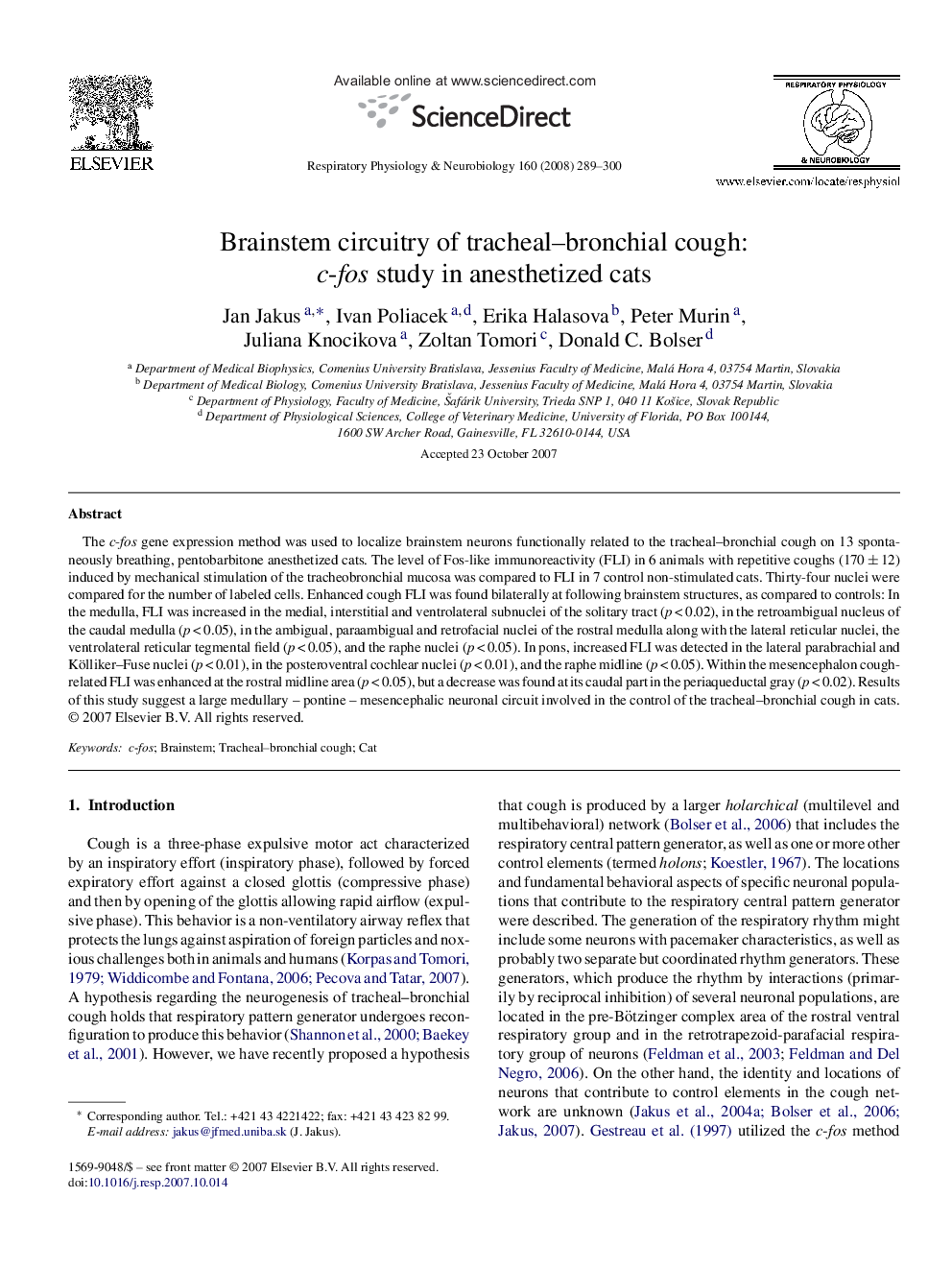| Article ID | Journal | Published Year | Pages | File Type |
|---|---|---|---|---|
| 2848182 | Respiratory Physiology & Neurobiology | 2008 | 12 Pages |
The c-fos gene expression method was used to localize brainstem neurons functionally related to the tracheal–bronchial cough on 13 spontaneously breathing, pentobarbitone anesthetized cats. The level of Fos-like immunoreactivity (FLI) in 6 animals with repetitive coughs (170 ± 12) induced by mechanical stimulation of the tracheobronchial mucosa was compared to FLI in 7 control non-stimulated cats. Thirty-four nuclei were compared for the number of labeled cells. Enhanced cough FLI was found bilaterally at following brainstem structures, as compared to controls: In the medulla, FLI was increased in the medial, interstitial and ventrolateral subnuclei of the solitary tract (p < 0.02), in the retroambigual nucleus of the caudal medulla (p < 0.05), in the ambigual, paraambigual and retrofacial nuclei of the rostral medulla along with the lateral reticular nuclei, the ventrolateral reticular tegmental field (p < 0.05), and the raphe nuclei (p < 0.05). In pons, increased FLI was detected in the lateral parabrachial and Kölliker–Fuse nuclei (p < 0.01), in the posteroventral cochlear nuclei (p < 0.01), and the raphe midline (p < 0.05). Within the mesencephalon cough-related FLI was enhanced at the rostral midline area (p < 0.05), but a decrease was found at its caudal part in the periaqueductal gray (p < 0.02). Results of this study suggest a large medullary – pontine – mesencephalic neuronal circuit involved in the control of the tracheal–bronchial cough in cats.
